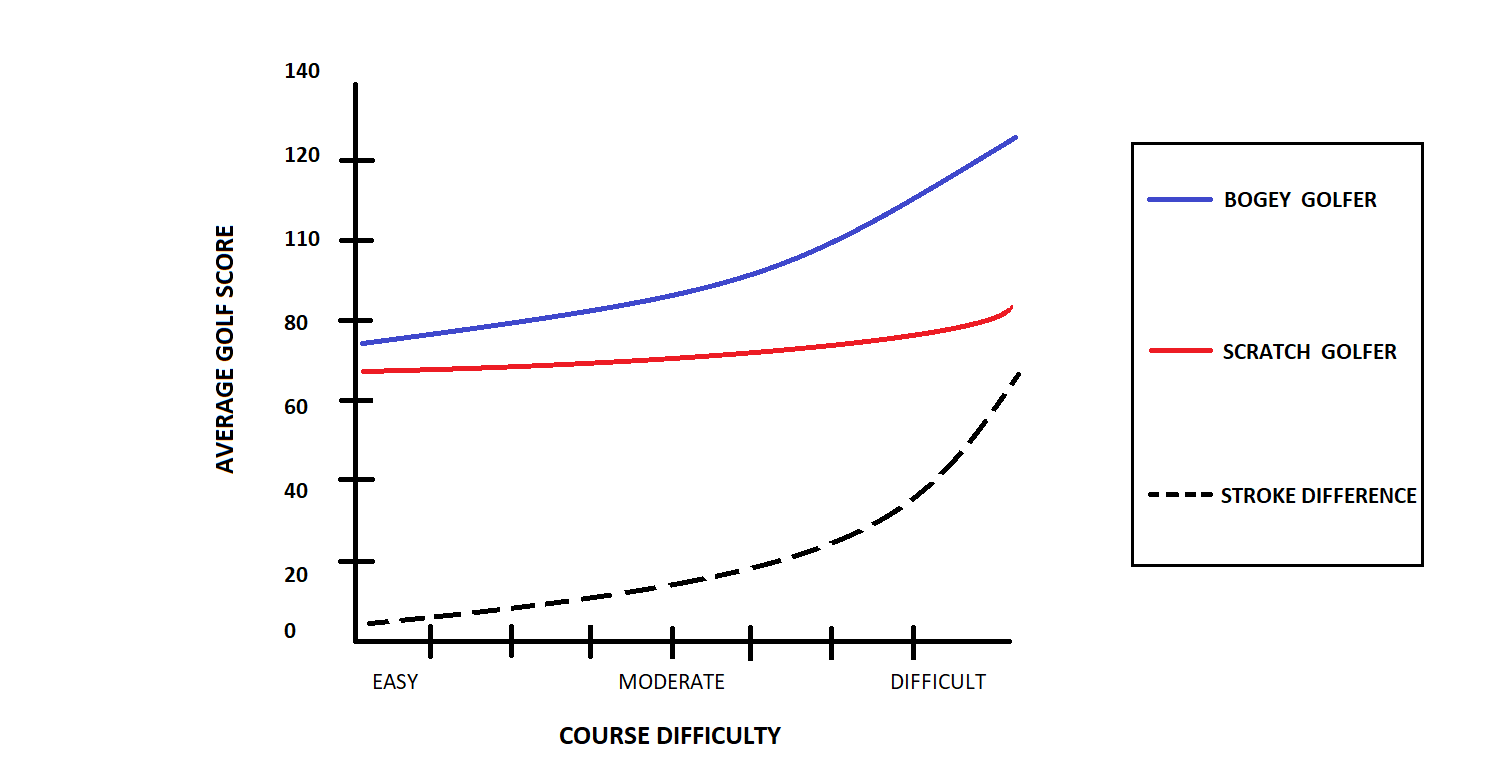What does the slope number mean on a golf course? Put simply: it is one measure of difficulty of the course. Generally, the higher the slope, the harder the course (although the course rating can be a stronger indicator of course difficulty). However, there is a little more to how the slope of a golf course works beyond just the number.
What the slope is actually showing is the relative difficulty of a golf course (set of tees on a course) for a bogey golfer compared to a scratch golfer.
But what does this mean?
Think about it this way: If a bogey golfer (or any higher handicap golfer) is playing on a very difficult course, then they will usually see their scores moving higher at a faster rate than a scratch or lower handicap golfer. In other words, a very difficult course is more difficult for a bogey golfer than for a scratch golfer.
Another way to think about it: it would be easier for a bogey golfer to beat a professional golfer on an easier course. So as a course gets more difficult (example: this course has deeper bunkers and more water!) it becomes more difficult for the bogey golfer to keep up.

Look at the chart above, as the slope gets higher, the degree to which a higher handicap will perform worse increases, while the lower handicap golfer score increases at a slower rate. Harder courses are usually more difficult for worse golfers.
Here are some important facts about slope that every golfer needs to know:
- You cannot compare the difficulty of two courses based on slope alone – you need other variables to get the full understanding of course difficulty like course rating, your handicap, bogey ratings, etc.
- A higher slope does not always mean a more difficult course, again depending on some factors mentioned above.
- Slope should not be used to compare sets of tees – instead slope tells you how proportionally or relatively more difficult a certain set of tees plays for the higher handicapped golfers versus lower handicapped or scratch golfers.
And lastly we will see how the slope is calculated:
The slope will always be a number in the range from 55 to 155, with the average and standard slope rating at 113.
You can calculate the slope by taking the bogey rating for a course, subtracting the course rating, and then multiplying that number by 5.381 for men and 4.240 for women. And finally, rounding up to the nearest whole number.
So it looks like this –
Slope Rating (men) = (Bogey Rating – USGA Course Rating) x 5.381
Slope Rating (women) = (Bogey Rating – USGA Course Rating) x 4.240
Clearly the slope rating is an important metric, but again remember that the course rating is a major factor when determining course difficulty.